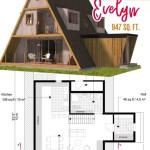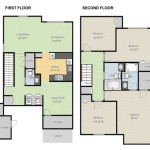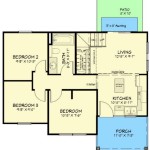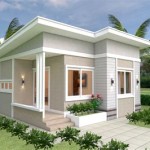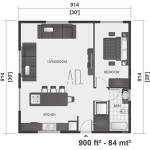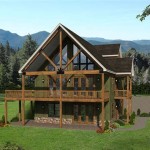Not So Big House Plans: A Guide for Rightsizing Your Dream Home
When it comes to home design, bigger isn't always better. In fact, downsizing to a smaller and more efficient home can offer a number of benefits, both financial and lifestyle-related. Here's a closer look at the concept of "not so big" house plans and how it can help you create a home that's perfect for your needs.
What is a Not So Big House?
A not so big house is a home with a square footage of less than 2,500. These homes are typically designed to be more efficient and sustainable, with a focus on creating livable spaces rather than excessive square footage.
Benefits of Not So Big House Plans
There are a number of reasons why you might want to consider downsizing to a smaller home. Here are just a few of the advantages:
- Lower costs: Smaller homes are typically less expensive to build, maintain, and operate. This can save you a significant amount of money over the long run.
- Reduced environmental impact: Smaller homes use less energy and resources to heat, cool, and maintain. This can help you reduce your carbon footprint and live a more sustainable lifestyle.
- Easier to maintain: Smaller homes are easier to clean, organize, and manage. This can free up your time and energy for other things that you enjoy.
- Promotes a more comfortable lifestyle: Smaller homes encourage a more connected and intimate family atmosphere. They can also help you to declutter and simplify your life.
How to Design a Not So Big House
If you're interested in building a not so big house, there are a few things you'll need to keep in mind during the design process:
- Prioritize your needs: Decide what's most important to you in a home and design your space accordingly. For example, if you love to cook, you might want to invest in a larger kitchen. If you're an avid reader, you might want to create a dedicated library space.
- Use space efficiently: Every square foot in a not so big house needs to be used wisely. Look for ways to maximize storage, create multi-purpose spaces, and reduce clutter.
- Focus on natural light: Natural light can make a small space feel larger and more inviting. Use windows and skylights to bring in as much natural light as possible.
- Choose the right furniture: Furniture that is too large or bulky can make a small space feel cramped. Instead, opt for furniture that is comfortable and proportional to the size of the room.
Finding Not So Big House Plans
There are several ways to find not so big house plans. You can purchase plans from a home design magazine or website, or you can hire an architect to create custom plans for you. You can also find free plans online or through your local library.
When choosing house plans, it's important to keep your needs and budget in mind. You should also consider the size of your lot and the climate in your area.
Conclusion
Not so big house plans can be a great option for those who are looking to downsize to a more efficient and sustainable home. By following the tips in this guide, you can create a home that's perfect for your needs and lifestyle.

Orlando Showhouse Sarah Susanka

Not So Big Plans Minnesota Monthly

Libertyville Showhouse Sarah Susanka

Not So Big Bungalow By Sarah Susanka Houseplans Blog Com

Curves Color House From Not So Big Floor Plans Condo Beautiful

Home By Design Showhouse Sarah Susanka

Not So Big House Plan I Like This But A Few Adjustments Plans Er Beach

Not So Big Bungalow By Sarah Susanka Houseplans Blog Com Cottage House Plans Craftsman Style Floor

Not So Big House Sudaiva Studio Archdaily

A Not So Big House I Like Would To Change The Shared Bath Upstairs Architectural Floor Plans



